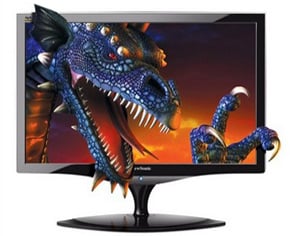NVIDIA GeForce 3D Vision Glasses
Introduction and Specifications

Back in August of last year, at the NVISION visual computing conference in San Jose, NVIDIA publicly demonstrated some new stereoscopic 3D technology. While stereoscopic 3D in and of itself is not new, the devices on display at NVISION were, and featured new hardware, monitors, wireless glasses, and software. At the event, the technology was demoed on a Mitsubishi 73-inch 3D Ready 1080p-capable DLP television and new ViewSonic 120Hz LCD monitors using a number of popular games. We got the chance to play a few games ourselves back then and watched some others play as well, and thought the effect was excellent.
Fast forward to today, and NVIDIA is ready to officially take the wraps off of their stereoscopic 3D technology, which is now known as GeForce 3D Vision. NVIDIA's GeForce 3D Vision product consists of a pair of wireless, rechargeable glasses, a base station / IR transmitter, and the necessary software and cables to connect the device to a PC. However, it needs some other specific hardware to function properly as well--namely a compatible monitor and graphics card.
The specifications and main features of NVIDIA's new GeForce 3D Vision glasses are posted below, but we've got many more details on the pages ahead. Take a look...

NVIDIA GeForce 3D Vision Glasses
|
|
Minimum system requirements
Compatible GeForce 3D Vision-Ready displays devices
Supported Microsoft DirectX Games: |
Compatible NVIDIA GeForce GPUs:
GeForce 3D Vision Kit includes:
|
As you can see, the system requirements for GeForce 3D Vision are not very high--a modern dual-core processor, 1GB of RAM, and Windows Vista are necessary, along with a compatible GeForce graphics card in the GeForce 8- 9- or GTX200-series. Finding a compatible monitor is a different story though. Any CRT capable of a 100Hz refresh rate (or higher) will work, as will a number of 3D capable HD televisions and projector. As for LCD monitors, only certain, true 120Hz capable displays will work.


Viewsonic and Samsung 120Hz LCD Displays






